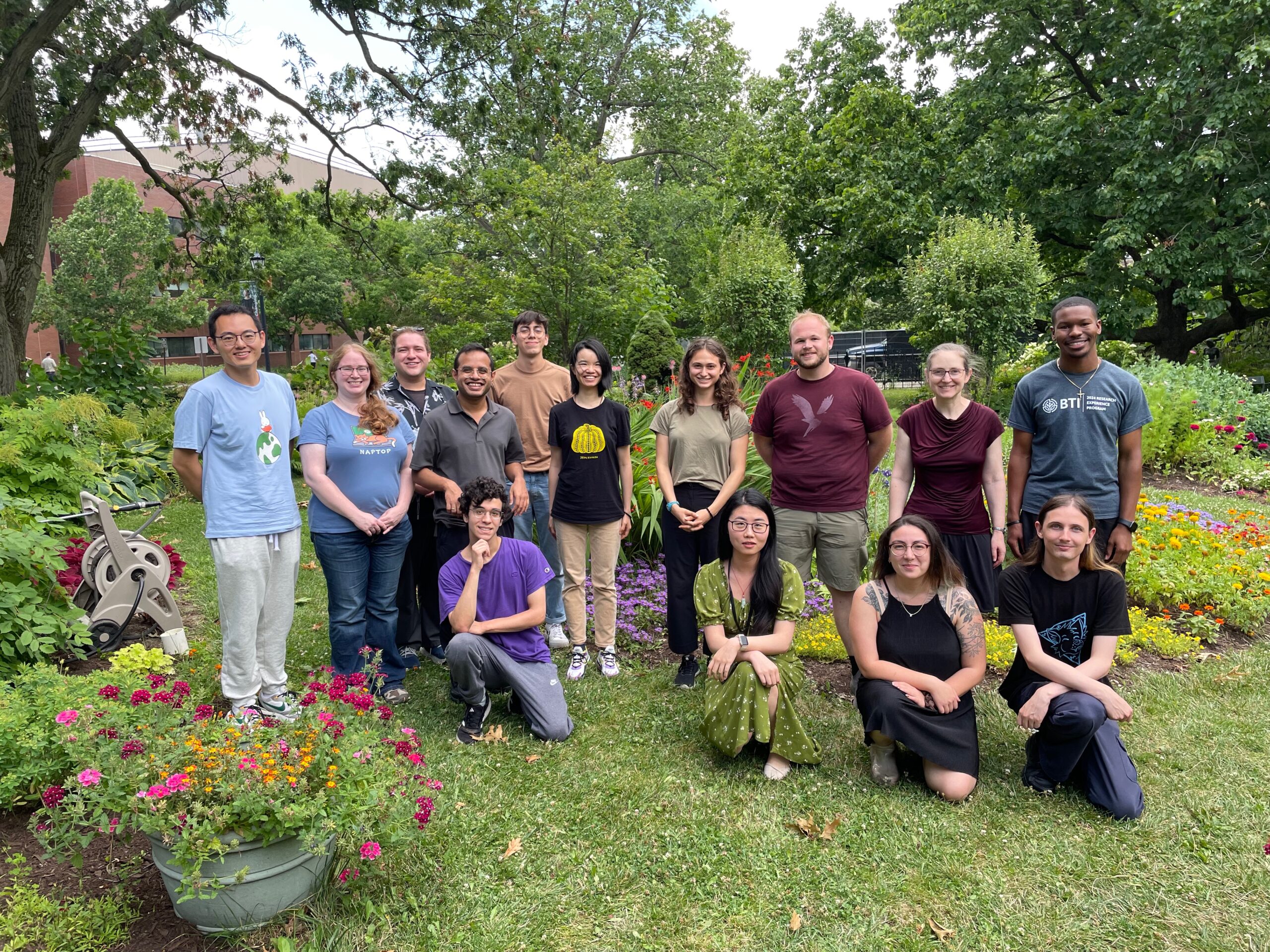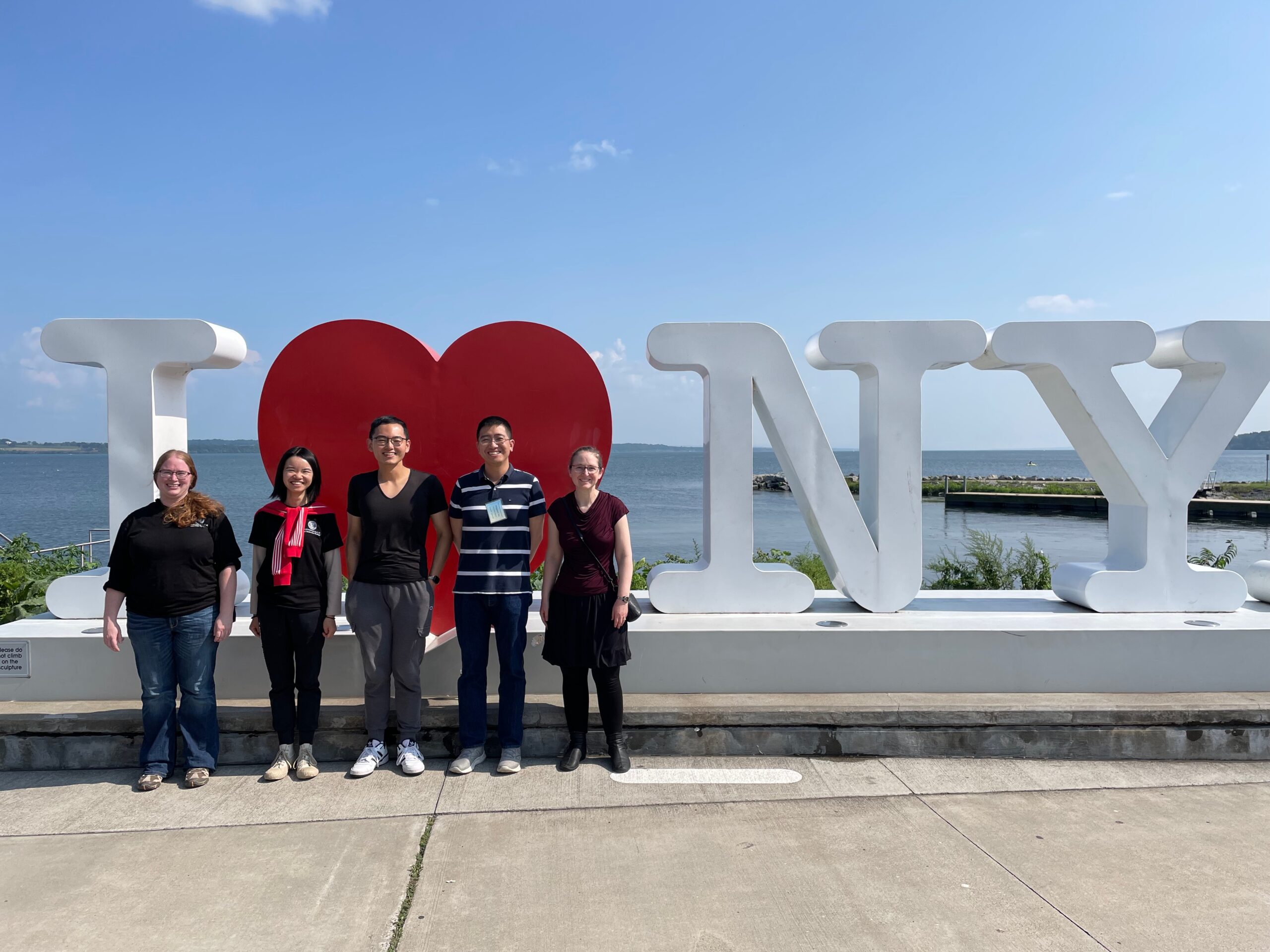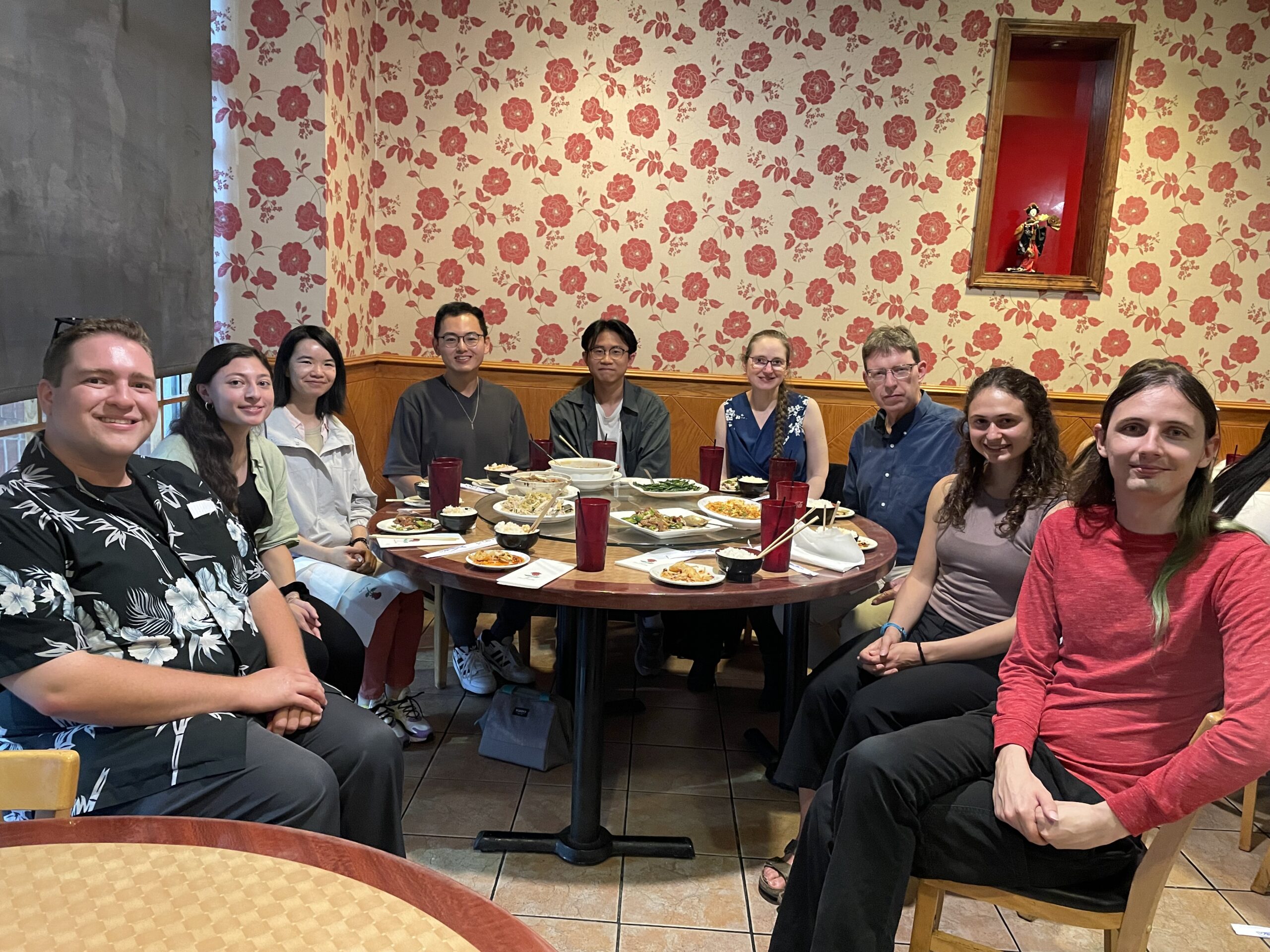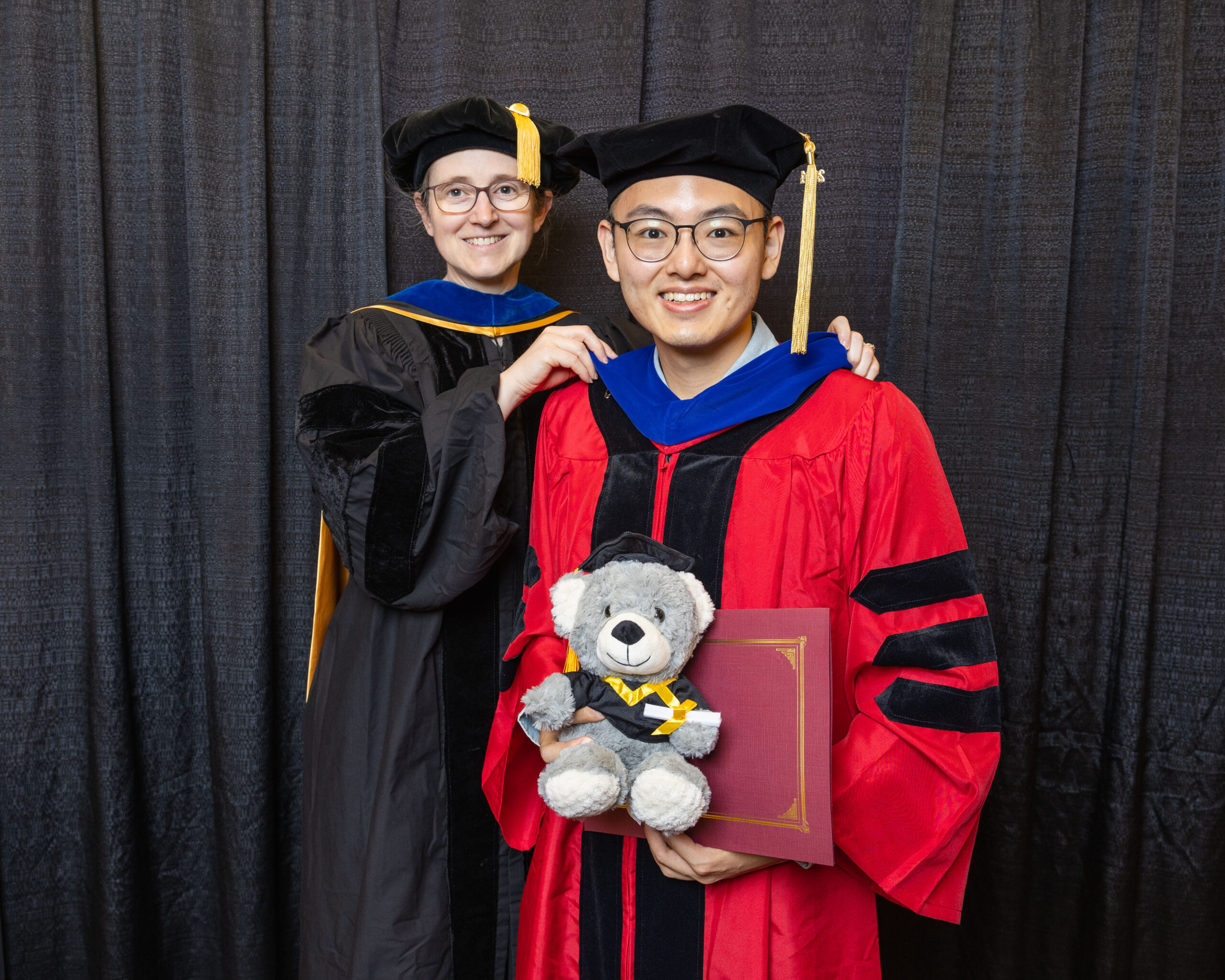Hello, Adrienne!
Let’s start at the beginning. When did you get interested in science and what has been your journey so far?
During my undergraduate, I was looking for a research project when I happened to see an advertisement in the undergraduate biology office for a student to work on plant embryos. That sounded cool to me. However, the ad was old and the position had been filled, but they were excited to have a student interested in plants. So they created a new position for me. I worked in Chris Somerville’s lab at the Carnegie Institution for Science Department of Plant Biology at Stanford for three years, researching the Arabidopsis embryo mutant yoda together with then postdoctoral scholar Wolfgang Lukowitz. I learned a lot about how to do science through our chats during summer afternoon coffees. I was captivated by the subject, and have been researching plant cell and developmental biology ever since. As an undergraduate, I was also interested in applied math and earned a minor in Mathematical and Computational Science (math, statistics, computer science, and operations research), which has served me well in my interdisciplinary research.
In graduate school, I learned molecular genetics from Martin Yanofsky at UC San Diego. I researched Arabidopsis fruit development and the mechanisms patterning the different tissues that allow the fruit to open and release the seeds. I enjoyed graduate school, particularly the thrill of figuring out how the biological network worked. In my postdoc with Elliot Meyerowitz at Caltech, I learned the computational morphodynamics approach of combining biological experiments, especially live imaging, with computational image processing and modeling to understand the dynamic process of development. I started to work on Arabidopsis sepals as a postdoc because at that point the only part of the plant that had been live imaged was the inflorescence meristem. I reasoned that if the inflorescence meristem could be imaged, the sepals on the flower buds surrounding the meristem could too. I also became fascinated by the question of how patterning is integrated with growth and cell division, so I started to study the giant cells, highly enlarged endopolyploidy cells on the outer epidermis of sepals. In 2011, I started my lab at Cornell in the Weill Institute for Cell and Molecular Biology and the School of Integrative Plant Science, Section of Plant Biology. I continue to study Arabidopsis sepals and giant cells here.

What are the major research questions your lab focuses on?
My lab studies the intersection of patterning and morphogenesis in Arabidopsis development. We are fascinated by size and our research centers around two major questions. First, how are cells of different sizes created during development? We have found an intriguing role for stochasticity or randomness in the patterning of giant cells in Arabidopsis sepals. Second, how do organs such as sepals reach reproducible, robust size and shape despite the heterogeneity of cell growth, division, and gene expression?

Why is stochasticity important in biological systems, and what have you found about the role of stochasticity in Arabidopsis sepal development?
At the molecular level, biology is stochastic, meaning random interactions occur often when one protein bumps into another protein. The biological system must deal with this randomness and it generally has two approaches. First, random events are often averaged in time. For example, the cumulative mRNAs of a gene may have a well-defined pattern even though the production of each single mRNA is stochastic. On the other hand, biological systems can use this randomness to make two identical cells different, which is a symmetry-breaking mechanism. Take, for example, pattern formation during development. If all cells are exactly the same, and there are no signals from outside the tissue, then no cell can ever become specialized into a cell type. However, if there are small random differences in the amount of a transcription factor that specifies the cell type, these can be amplified by the gene regulatory network to specify that cell.
In my lab, we have found that the transcription factor ATML1 fluctuates apparently randomly in the developing sepal. When ATML1 concentration fluctuates to a high level during the G2 phase of the cell cycle, it specifies the cell to become a giant cell and the cell enters the endoreduplication cell cycle. When ATML1 concentration remains low throughout G2, the cell divides instead. Thus, the plant uses the fluctuations of ATMl1 to produce the scattered pattern of giant cells in the sepal.

It’s fascinating to think how randomness can lead to such organized patterns!
This brings me to your next research question: how do plants manage to achieve a robust size despite all this variability in growth and gene expression?
Developmental robustness is how the organism reaches the same developmental outcome again and again in each individual despite stochasticity in gene expression, variability in cell growth and division, perturbations from the environment, and sometimes even mutations. To identify mechanisms that result in developmental robustness, we have screened for mutations that disrupt robustness. Specifically, the size and shape of sepals in Arabidopsis is highly robust in the wild type, and we have isolated mutants where sepal size and shape are variable, such that sepals within the same flower are not the same size and shape. This loss of robustness is detrimental to the plant because sepals are defensive organs that protect the development of the reproductive organs inside. When the sepals are not the same size, the flower bud is open, and the developing reproductive organs are exposed. We and our collaborators and colleagues have identified five main mechanisms of robustness and are working to identify more. These five mechanisms are spatiotemporal averaging, feedback of neighboring cells, timing of sepal growth initiation and termination, essential processes like mRNA translation, and coordination of growth cells.
You combine computational modeling with experimental biology to study plant development. How do these two approaches complement each other?
Computational modeling and biology go hand in hand. Generally, as biologists, we do experiments to try to test a hypothesis or a conceptual model that we have. Using the experimental results, we refine this model until we understand how a process works. Computational modeling is just turning that hypothesis or conceptual model into a computer code and simulating it to see what happens. These simulations are far better than the conceptual model because they let us see what the outcome of these ideas really is, particularly with complex feedback loops that are not intuitive. Modeling often makes us address questions and additional aspects of the system that we haven’t thought of before. For example, is cell division synchronous in daughter cells or asynchronous? I think simulations are most useful when they do not reproduce the biological result, showing us that the hypothesis is wrong or is missing something. This prompts us to go back and do more experiments. Thus, modeling and experiments end up as a tightly integrated feedback loop. Modeling should not be an afterthought added at the end of a paper. However, often only the final model that actually “works” is published, and not all the intermediate models that were needed to get to the conclusion. Although the final model reproduces some aspects of biology, it is still just a hypothesis. New findings in subsequent papers are expected to change the model.
Did you face any challenges in integrating these interdisciplinary approaches?
In interdisciplinary collaborations, it is often a challenge just to learn the language to communicate with scientists in another discipline. When I was a postdoc in Elliot Meyerowitz’s lab, we had weekly computable plant meetings where we met with modeling and image analysis experts. I started to write down a list of terms that I didn’t know and looked them up later. Eventually, I published an annotated glossary of image analysis terms because I realized that if I needed it, other biologists would probably do too. Since then, I have continued to bridge this language barrier between biologists and computational experts. I created a hands-on Teaching Tool for The Plant Cell on Computational Image Analysis for Microscopy. My graduate student Kate Harline wrote a review describing the design/build/test cycle for computational modeling. Currently, with students in my class and my postdoc Avilash Singh Yadav, we are writing two annotated glossaries for computational modeling terms. I hope that all of these resources will make it easier for others to enter this interdisciplinary field we call computational morphodynamics.
Given the interdisciplinary nature, what skills do you look for in a student interested in joining your lab?

I look for students who are deeply interested in the same scientific questions that I am, who are eager to think and come up with new ideas for their projects, who are brave about trying things they don’t know how to do yet, who are persistent to overcome experimental setbacks, and who are caring and kind people.
Finally, apart from your work, what keeps you excited?
My cats! We have two black and white polydactyl tuxedo cats aptly named Squeak and Lovebug. Their antics always keep us entertained. I also enjoy reading novels and walking.
—
If you would like to know more about Adrienne’s work, you can find it here.
How organs develop robustly despite variations in cell division
A trade-off between speed and robustness in development
Review on developmental robustness
You can also contact Adrienne here.





